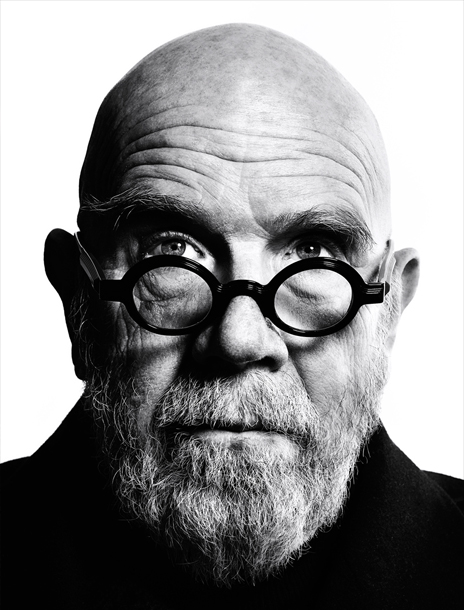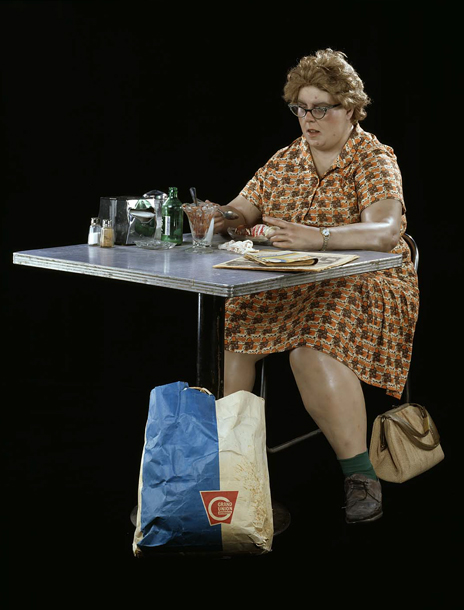The Postmodern era begins around the end of World War II, in 1945, and The Vietnam War: The Cold War, ‘55-’75. In the USA political and racial turmoil contribute to the reasons why Martin Luther King, President John F. Kennedy, and his brother Senator Robert F. Kennedy are assassinated. People learn to exchange naivety for harsh reality. Postmodern painting reflects trained artists’ responses. No longer dependent upon classical teachings, some artists begin to incorporate image-based commercial products and services. This collection of paintings illustrates the unleashing of artistic freedom.
Charles Thomas (Chuck) Close (1940 -) is born in Monroe, Washington. In 1968, he settles in New York City.
The artist has Dyslexia and Face Blindness. He can only recognize a face shown on a flat surface. Close does not go beyond fourth grade arithmetic, though he completes an M.F.A. from Yale University, and studies in Vienna.
When he is forty-eight years old, a blood clot forms in an artery and he is left severely paralyzed. Close needs a brace device attached to his partially mobile hand, to hold a paint brush. Other aids and a state-of-the-art wheelchair help him to paint again. Don’t miss Chuck Close’s note to younger self. .
Close’s distinctive self-portraits and portraits of friends and family position him among the most famous of his contemporaries.
In his seventieth year, President Barack Obama appoints him to the President’s Committee on Arts and Humanities the advisory body to federal arts agencies.

Postmodern era. Photorealistic movement (1970s – present). The established Fine Art community, in the fifties – sixties are unhappy with the Abstract Expressionist and Pop Art movements. Chuck Close is a pioneer of Photorealism, in the early seventies.
At the point of transition, between old and new movements, painters want the old guard to consider their new values. Some artists painstakingly strive to replicate photographs of people, scenes, and other images to please. But, Chuck Close stays his course.
Hanson’s super-realistic sculpture is cast from a live model and recreated in fiberglass resin and vinyl. She is a middle-class American woman in real clothes sitting at a table eating a “Banana split.” The boat-shaped dish holds the split banana and vanilla, strawberry and chocolate ice cream. Nuts, whipped cream and a cherry complete the confection.
Hyperrealists are not to be confused with Photorealists. Compare Richard Este’s photo-realistic work, with its surface slick as glass, and the work of Close. Richard Estes, Diner, 1971.

Go on to Describe, Analyze, Interpret & Conclude. Contact me for help.
Self-Portrait (1997. Oil on canvas. 9 x 7 ft. (259 x 213 cm). Close’s neck-up images evolve from black-and-white photographs to colorful, patterned marks on canvas. Of his patterned paintings, he says, “I’m pre-pixel. They got it from me.”
Mr. Close’s individual units of color gradations are in the hundreds. Shadows range from light to dark. Combined they contribute to the 3/4 head-shot, build-up, of his face. His work is flat like the wall it hangs on—Trickery at its best. Close says, “I want to break down the image and make it so the viewer has to scan it like a landscape.”
You may agree that the artist’s color palette expresses a similar warmth you see in Matisse’s Crockery on a Table, in the Modern Collection.
When you view the video look over Chuck Close’s shoulder to observe how the individual mosaic-like cells create a meandering grid pattern.
Notice when a cell is zoomed it could be a standalone painting because each one is meticulously detailed and refined. Watch Chuck Close: A Portrait in Progress.